- Theodor Leschetizky
- Elisabeth Carron
- Martin Korn Music Production
- New York City Opera
- Broadway
- Amil Biswas
- BBC Choral Society
- Scriabin: Sonata No 2
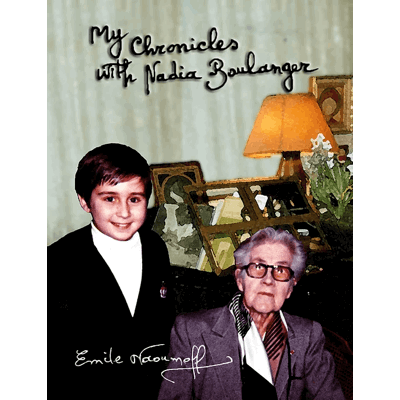 PODCAST: Join Jenna Orkin, Maria Nockin, John Daleiden, Gerald Fenech, Julian Jacobson, Patrick Maxwell, Giuseppe Pennisi and Mike Wheeler for a fascinating fifty-minute audio only programme.
PODCAST: Join Jenna Orkin, Maria Nockin, John Daleiden, Gerald Fenech, Julian Jacobson, Patrick Maxwell, Giuseppe Pennisi and Mike Wheeler for a fascinating fifty-minute audio only programme.
ARTICLES BEING VIEWED NOW:
- February 2023 New Releases - Browse a large selection of new recordings
- Concours de Genève - The Swiss organisation announces the candidates for its 2025/26 conducting competition
- orchestral music
- Ludwig van Beethoven
- United States of America
A Terrific Show
FRANCES FORBES-CARBINES experiences Mozart's 'The Marriage of Figaro' at English National Opera, praising the music but not the costumes or the set
'What is civilisation?' Sir Kenneth Clark asked in the first episode of his 1969 BBC Television series Civilisation. 'I don't know. I can't define it in abstract terms, yet. But I think I can recognise it when I see it.' For me, it is a short piece of music to be found in Wolfgang Amadeus Mozart's opera The Marriage of Figaro: entitled Tutto è tranquillo e placido and found in the fourth act, to hear it is to experience utter loveliness. It is sung by a lonely Figaro alone on the stage, fretting about the supposed infidelity of his beloved wife: taking in the night sky, he sighs as he sings of how beautiful Venus joins bold Mars in sensual union; unknown to them, Vulcan has espied them and is making his way over to put things right. Vulcan was a proposed planet that some pre-twentieth century astronomers thought existed in an orbit between Mercury and the Sun: that Mozart - clever, curious, spiritual, a man of the Enlightenment - writes of the night sky in this way moves me. I don't know why - but the music is exquisite; tremendous. It is civilisation.
The Marriage of Figaro is set within a single day, opening in the morning and ending as the night draws on: it is the wedding day of the eponymous Figaro and his love, Susanna. It was originally based on La Folle Journee, ou le Mariage de Figaro by Pierre Beaumarchais. Figaro is performed by former Harewood artist and British bass-baritone David Ireland; Susanna is sung by another former Harewood artist and British soprano, Mary Bevan. British soprano Nardus Williams was excellent as the lovelorn Countess Almaviva, forever fretting behind her enormous sunglasses and casting rueful glances at her erstwhile husband, Count Almaviva, performed by American baritone Cody Quattlebaum. (What a name.) I thought Quattlebaum had the best voice of the whole cast: he commanded his mighty and astonishing voice with great mastery.
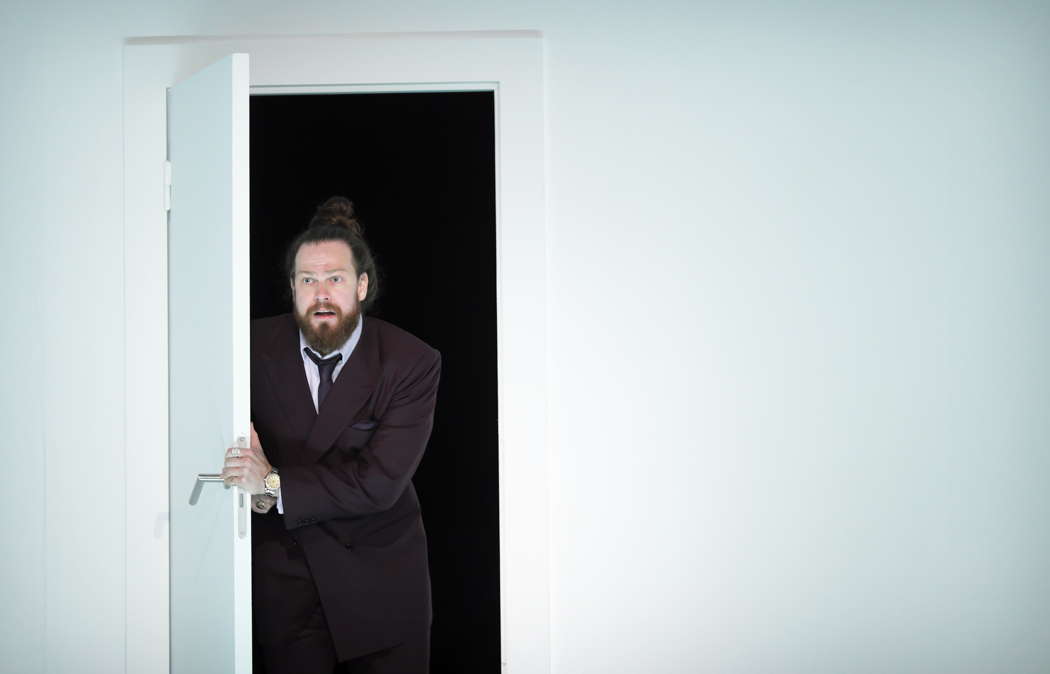
Cody Quattlebaum as Count Almaviva in English National Opera's The Marriage of Figaro. Photo © 2025 Zoe Martin
The production, by director Joe Hill-Gibbins, was in modern dress: when I saw this in the promo photos, my heart sank. The men wore suits; the women, tailored dresses and pinafores, with the countess sporting a wider wardrobe of macs and scarves and trousers.

The cast of English National Opera's The Marriage of Figaro.
Photo © 2025 Zoe Martin
The thing is, if The Marriage of Figaro is set in modern times, the whole concept of droit du seigneur - translating from the French as 'the right of the lord', referring to a legal right in medieval and post-medieval Europe allowing feudal lords to have sexual relations with any female subject, particularly on her wedding night to another man, falls apart. We don't have droit du seigneur now; haven't done for centuries. It is therefore nonsensical to see Susanna tell the count 'I must obey you: you speak and I obey' when he voices the wish to seduce her when there is, in the modern age which in this production their clothes indicate, no legal or moral prerogative for her to do so.
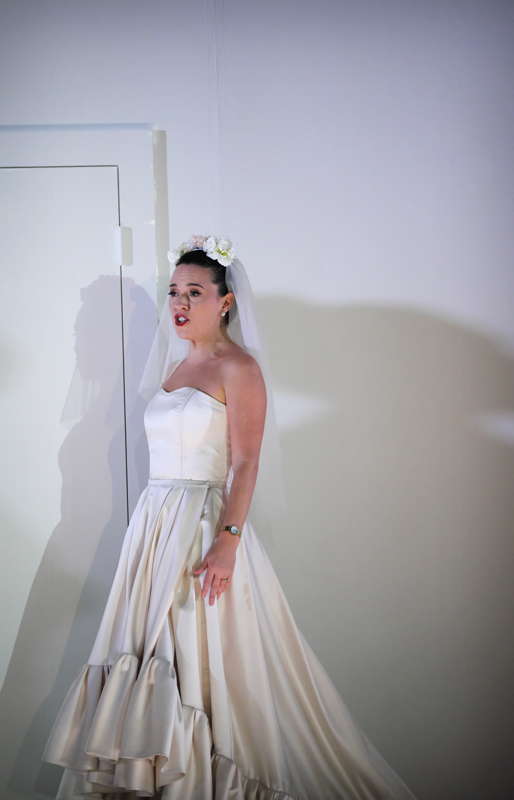
Mary Bevan as Susanna in ENO's
The Marriage of Figaro.
Photo © 2025 Zoe Martin
Equally baffling when Figaro is set in modern dress is the antiquated systems in use, made reference to in the libretto: when the countess and Susanna conspire to send the count a letter sealed with a pin, could they in their modern dress and modern times not just send him an email, or a text? To my great annoyance, in continuing with the modernised theme, director Joe Hill-Gibbins made the appalling decision to render Cherubino's famous and much-loved aria Voi che sapete as comic relief, instructing Cherubino to oaf about and dance in a kitsch fashion while singing the short piece. It garnered laughs from the audience, which for me quite ruined its loveliness, and was at best an unwanted distraction; at worst, a damned irritation.
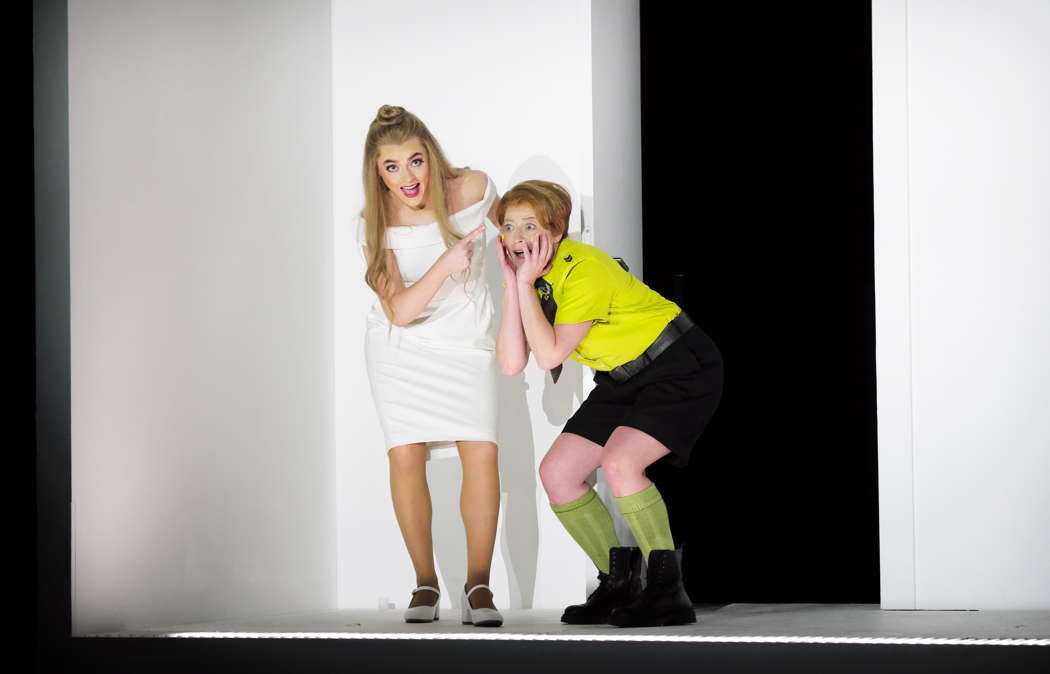
Ava Dodd as Barbarina (left) and Hanna Hipp as Cherubino in English National Opera's The Marriage of Figaro. Photo © 2025 Zoe Martin
The set was a depressing state of affairs: designed by set designer Johannes Schutz, it consisted only - only! - of a white, sterile corridor such as one would find in a hospital or office, with four doors leading off it - and this dispiriting sight lay before the audience throughout the entire production. (When the action takes place in the finale in the 'garden', the corridor is illuminated in green.) It is disappointing when Mozart's music is so very elegant; so exquisite, that it is set against such drab and dismal scenery and such unimaginative costumes: what, exactly, are the set designer and costume designer aiming to achieve?
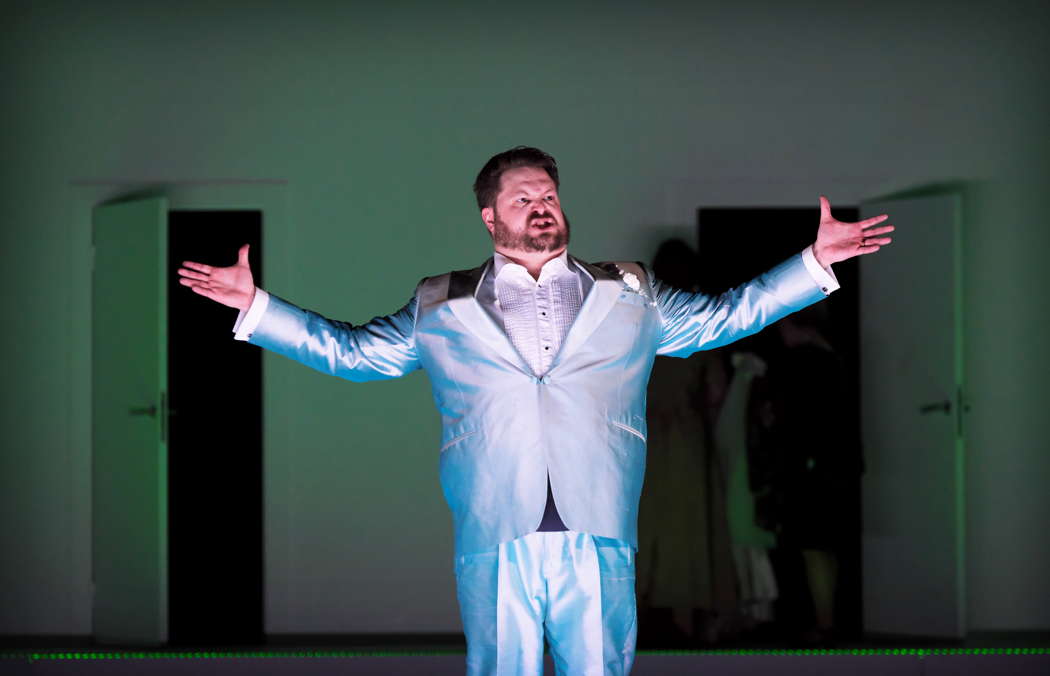
David Ireland as Figaro in English National Opera's The Marriage of Figaro.
Photo © 2025 Zoe Martin
The singers, though, and the orchestra were phenomenal and without fault. They truly put on a terrific show, all in good voice, and made for a very moving and profound operatic experience for the audience. Bravi tutti.
Copyright © 7 February 2025
Frances Forbes-Carbines,
London UK



